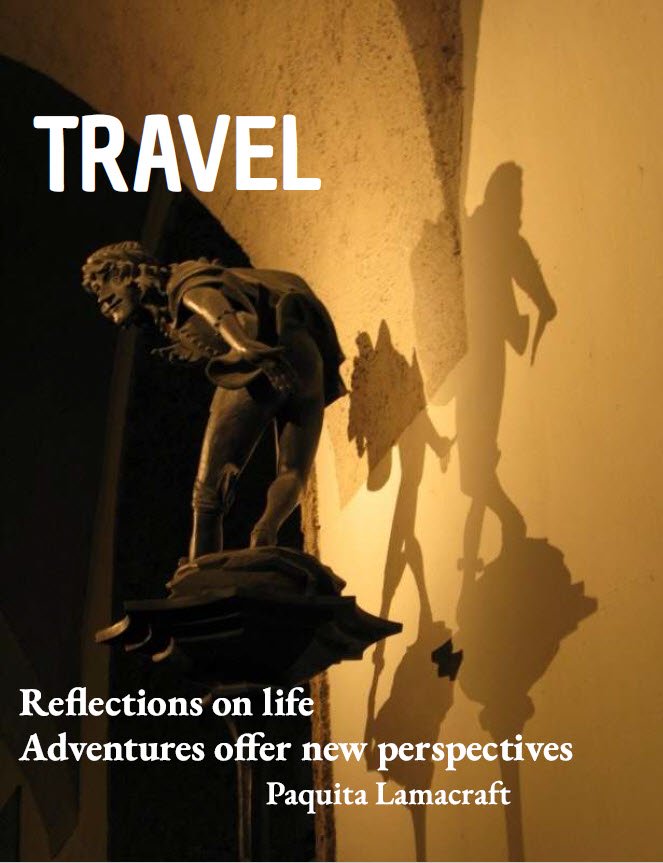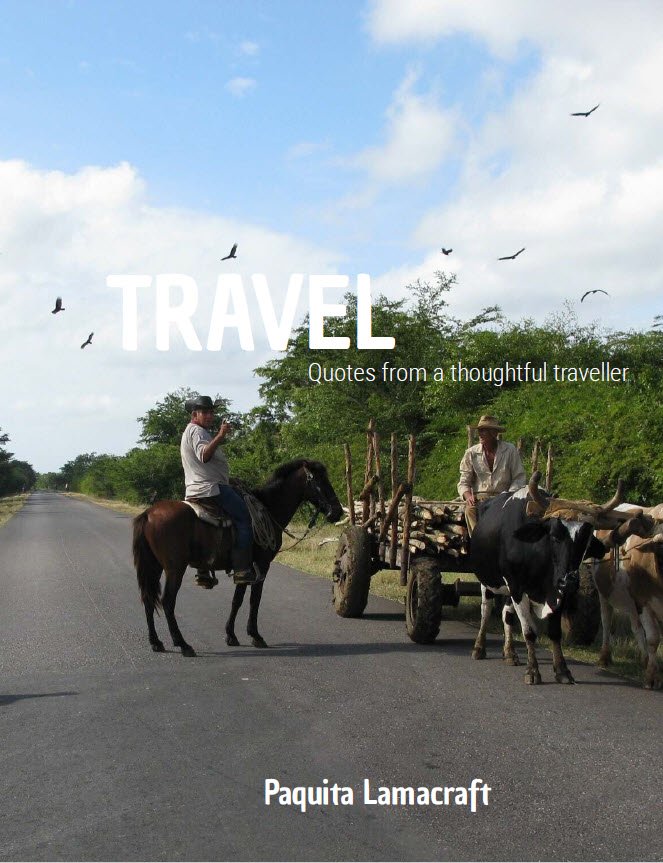Parrandas Festival & pedlars
in Remedios Cuba
El Louvre a little piece of Paris
in Remdios Cuba
The Parisian style café El Louvre flanks the plaza of Remedios and probably hasn’t changed that much since it opened in October 1866.
It remains the hub of the town and has served its patrons continuously over all that time.
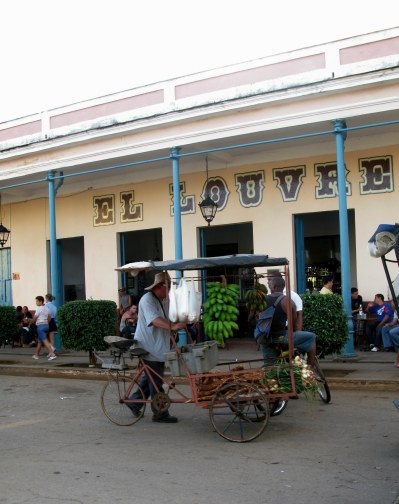
Since 1820 when the first Parrandas festival was held, El Louvre has continued a tradition of its own by serving a heady concoction of milk, rum or sugar cane brandy, aromatic herbs (usually crushed orange leaves amongst them), and cinnamon.
Made from a carefully guarded recipe, this El Louvre ‘Parish Punch’ has been warming Parrandas performers and audience alike on the cold night of parades leading up to the big event that starts at the close of the tolling church bell on Christmas Eve. That is when a massive illuminations are lit on the masterpiece trabajos de plaza or works of the square, and competition officially starts.
Parrandos preparations in Remedios
The competition is between the two neighbourhoods of San Salvador (St. Saviour) whose supporters are wearing red with their cockerel symbol el gallo on the north of Plaza Isabel II, and El Carmen (our Lady of Mount Carmel) in tan with their symbol of the gavilan or sparrow hawk situated in front of the parish church of St. John the Baptist - Iglesia Major de San Juan Bautista.
When we approached the town Parrandas preparations were in full swing and our way was briefly blocked by long trailers.
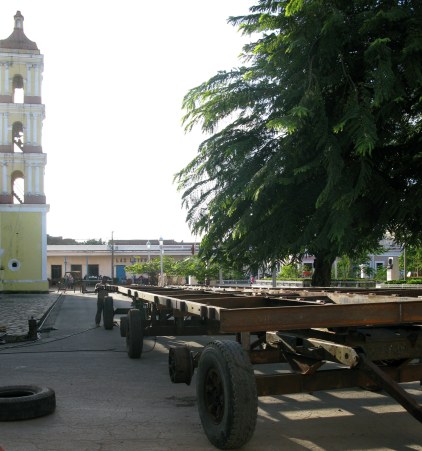
This process was complicated by the often repeated challenge of keeping old tyres inflated. This flatbed was no exception.
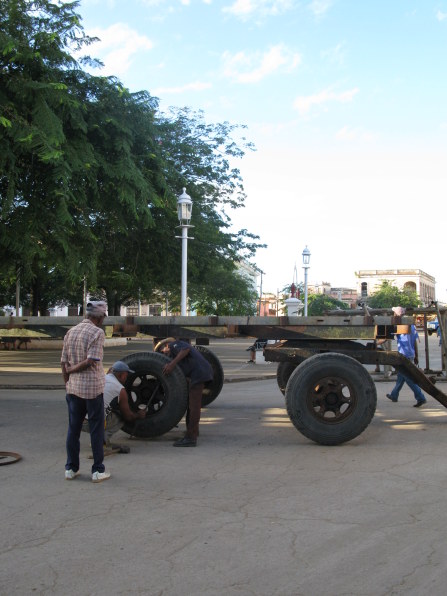
As we would say, 'fortunately the tyre was only flat on the bottom'.
It was duly changed from a selection of spares on the works trailer that had a large rock as a chock by its rear wheel to stop it rolling away.
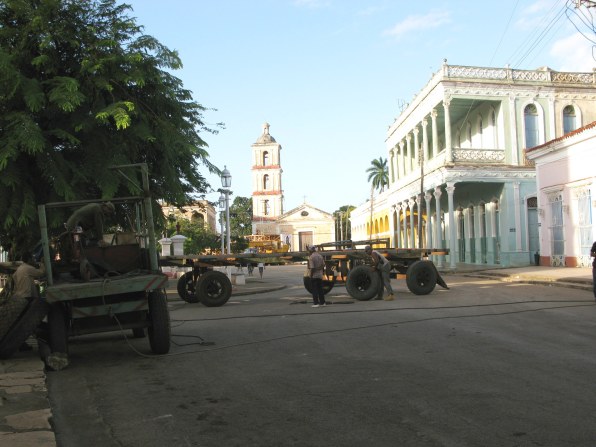
Later, I watched people manoeuvring these semi-trailer flatbeds into place so the construction of the floats could start.
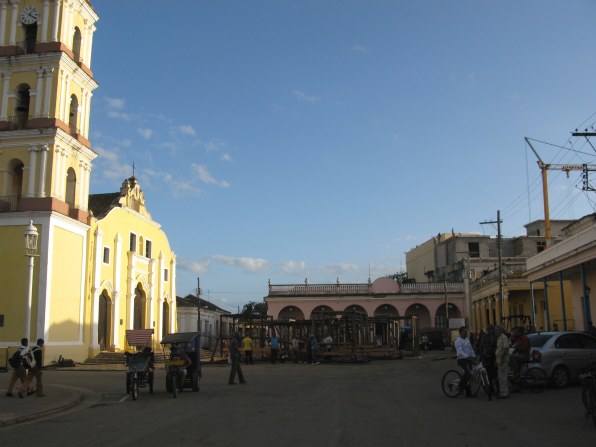
Parrandos: A Remedios tradition and its rules
The Parrandas are judged by popular vote of Remedios on the night of Christmas Eve.
The Trabajos(or works) are judged by rules on the amount of white spaces, the distance between decorations, and whether their electrics can stand the strain of over 13,000 light bulbs on the 28 metre (91’) structures. The characters on the floats are not permitted to move once the float start to move, and if they do they cause demerit points for their district.
The competition is not limited to these two massive structures – there are floats from each district, as well as the quantity and spectacular effect of their fireworks - and rumba dancing.
Well it’s Cuba – dancing has to be part of the equation.
The preparations for the big bang were well underway when I was there, just as they have been ever since the more casual noise making of its origins became organised into an annual event.
The story goes that in the early 18th century midnight mass in Remedios wasn’t as well attended as the then parish priest thought it should be. He organised the children of the town to be noisy urchins and run through the town rattling stone-filled cans, letting off fireworks, and ringing cowbells. The idea was to keep the adults awake so they may as well come to church as wait for the noise to subside.
The priest in question was Father Francisco Vigil de Quiñones who was from Asturias in northern Spain. There, on Christmas Eve it is a tradition to take to the streets after your Christmas dinner (celebrated on Christmas Eve throughout Europe and not on the 25th). The crowds swell as midnight approaches and the streets resound with loud clapping, singing, and drum beating – so whether the popular urban myth of the good father really wanting to keep the parents awake for mass is a myth or whether he was just translating his own cultural traditions to his new parish I leave to your judgement
At any rate, it seems that the kid in everyone thought this parading and chanting and letting off fire crackers was really too good just for small people and so the Parrandas was born as an institution.
In more recent history, it is only since the loosening of laws permitting private commerce that the Parrandas have become a natural site for the street pedlars with their creative offerings.
Having witnessed the Spanish delight in the loudest possible fireworks that could have doubled as mortar fire at the Bonfires of St. John (Las Hogueras de San Juan) in Alicante, and a slightly less ear shattering version in the Plaza Mejor in Madrid as the count-down resulted in a fiery proclamation of the New Year, I had some idea of what was being described to me in the abstract about the impending fireworks display of the Parrandas.
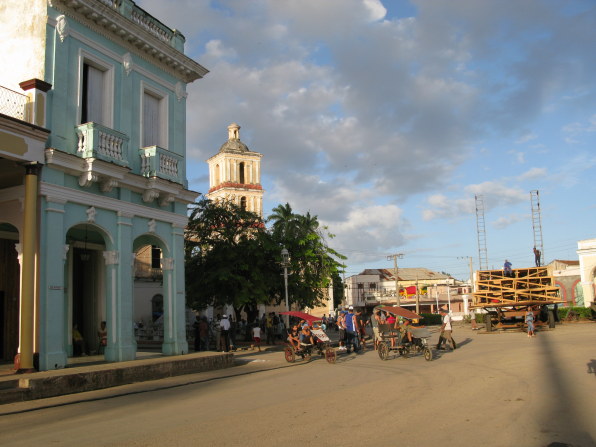
Parrandos construction
The framework for one of the towers was well underway.
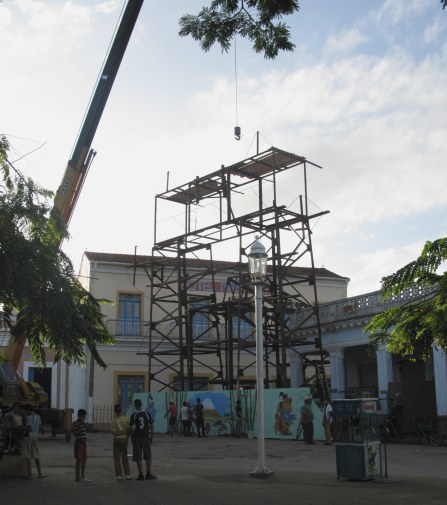
Further over on the square, the other was also rising to spectacular height.
As my eyes scanned the square, with all its activity, I couldn't help but feeling as if I was in a time warp: with its aged vehicles and lack of modern a cranes or heavy trucks this scene could have been from the early 1950s.
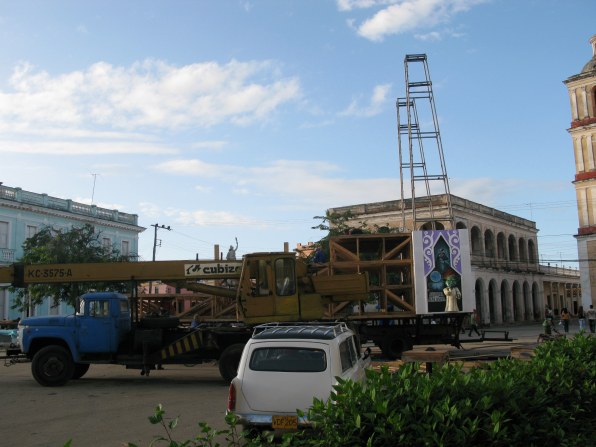
I always find the arrangements for such construction in Cuba quite fascinating.
The old methods of leverage had a man at each end. One crane was doing double duty for each faction as the scaffolding was built for each display.
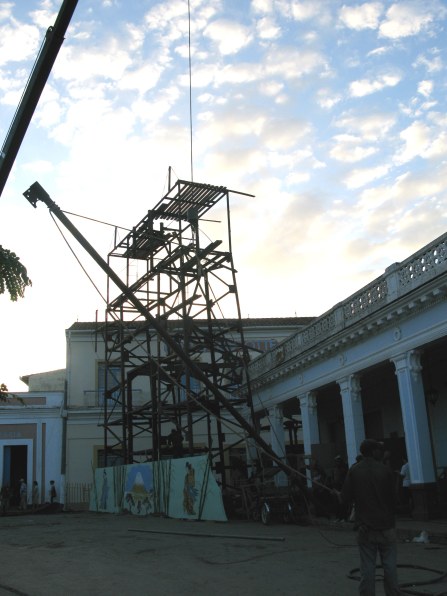
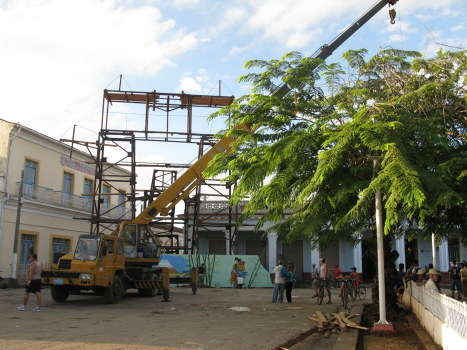
As is often the way throughout Cuba, the electrics are a bit of a worry to someone not Cuban.
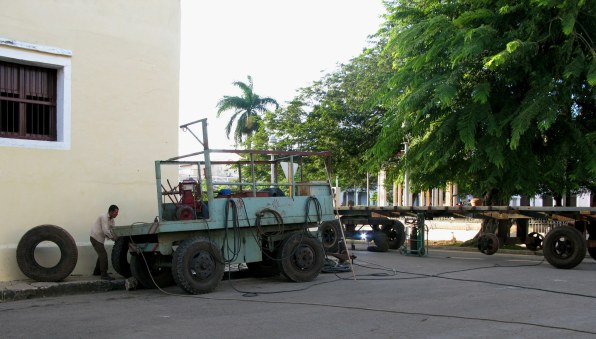

Cuban irony amongst the parrandos builders
In a Cuba where hardship is an everyday affair, humour is ever present.
Workers of El Salvador district were riding on a farm wagon tray pulled behind a tractor.
On the front of the tractor as it chugged slowly down one side of the plaza was this cardboard sign ‘Via Libre’.
The rum and cola drink we know as a "Cuba Libre, which was the slogan of Cuban Independence "Free Cuba" spawns many parodies in wry Cuban humour amongst Cuban friends who question the reality of the aspiration.
I took this sign as another of the frequent use of a play on words I heard on the streets, but perhaps not.
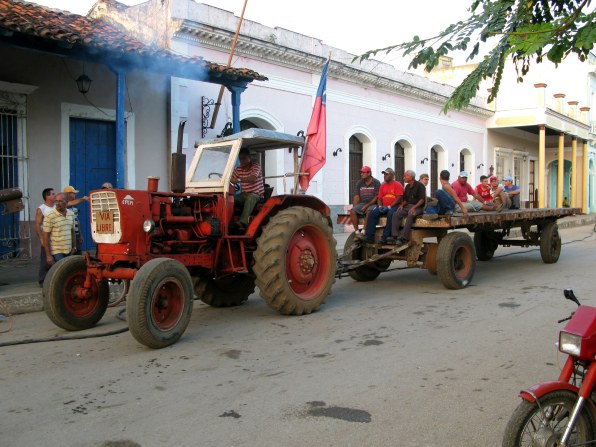
The way people make a play on words is something I often enjoyed in Cuba and this is not an exception.
In the early 1920s when anarchist periodicals were widely published, one was called La Battalla, ‘The Battle’ and another Via Libre, ‘The Free Way’.
There are many ironic references to what that Free Way means in today’s Cuba – and of course there is always a possibility of it being a simple play on words of the chugging tractor being on a ‘Freeway’.
That is the beauty of word play: it can mean what you make of it, but all the options usually cause a smile to dance on the lips of those who read them.
As Lord Byron wrote:
Words are things, and a small drop of ink, falling like dew upon thoughts,
produces that which makes thousands, perhaps millions, think.
Parrandas - fiesta by any other name
The Parrandas is a period of fiesta, and where there is fiesta in these days with the opportunity to do a little street trading, out come the pedlars with goodies for parents to buy for their children.
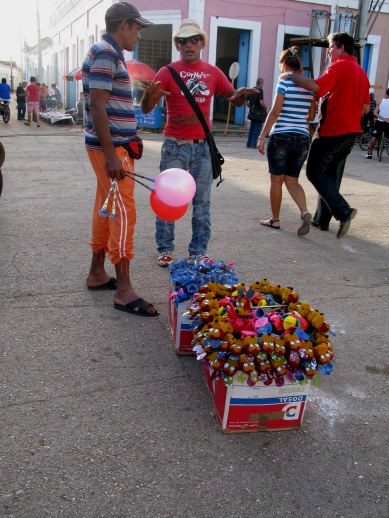
Street fun fair in Remedios for the parrandos
In Cuba a Fun Fair takes on new types of definition.
In the absence of fancy rides there are many chances to tempt fortune, as pedlars captivate audiences with games of chance – some more complex than others.
In this one, dice were thrown onto a hand-painted board in the hope of winning some chocolates or lollies of some sort.
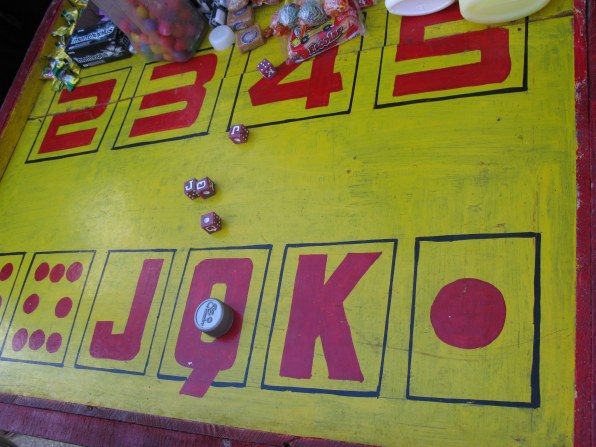
There was another hand-painted board with another game of dice – the rules of which totally eluded me.
I let myself off for this lack of understanding after watching the intense concentration of the local lads as they listened carefully in their own language. My struggle with it in a foreign language seemed no less than theirs. It obviously wasn’t wildly obvious to them either.
Pedlars of chance have a double chore: first to design their game and then to convince their eager public to part with their cash. This chap had just enough complexity in his game to engage the crowd and not too much to make it too complicated to participate.
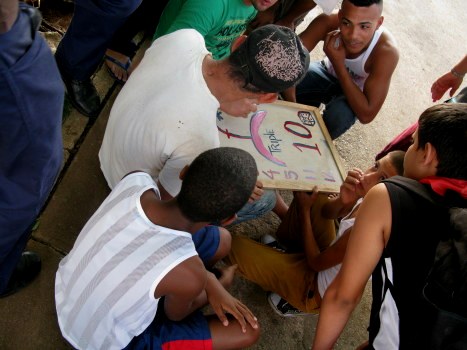
The dice rolled and I didn’t see a winner.
It seemed to be a true Fun Fair just like in any country where the odds aren’t that great of your chosen prize being won!
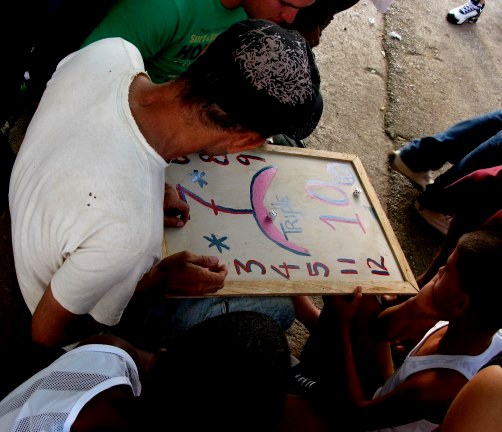
However, for my vote, the very best game in town was the guinea pig stakes.
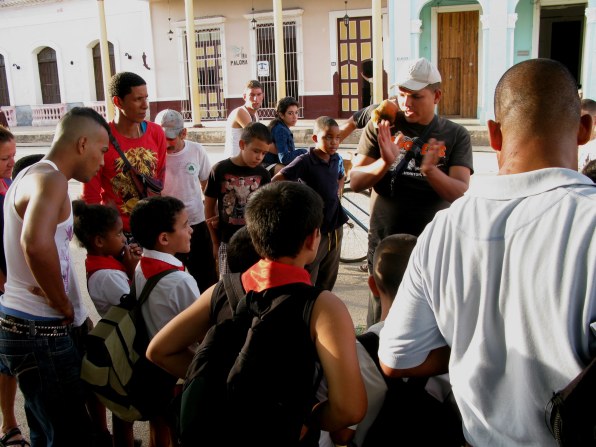
I came across it because it had the biggest crowd and as with the locals, that drew me towards the best looking little pedlar in the town.
The crowds were being introduced, but all I could see was the back of our star’s head as he was consulted about his destination as a prep to the game ahead.

This little pedlar was guaranteed to engage with the audience of punters.
The star of the show was first shown to me in a rather undignified posture, but one much to the delight of the crowd.
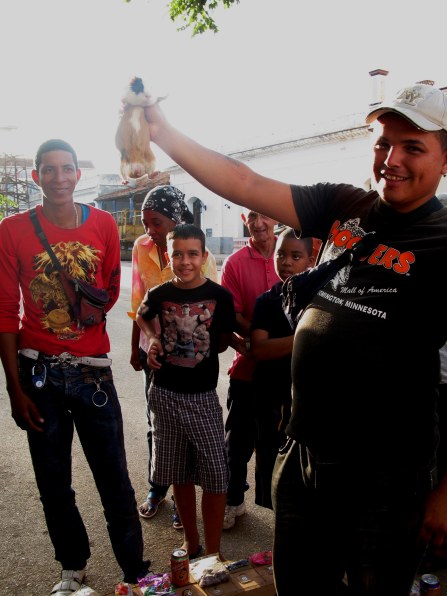
I remonstrated and asked for dignity to be restored, and then properly met this lovely little furry star of the show who was about to tease money from eager wallets.
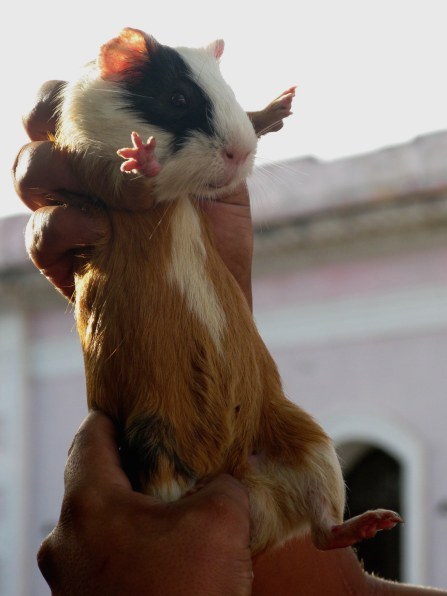
I never did quite get the details sorted out from the guinea pig owner but I took it that you bet on where the guinea pig would run to.
You would have previously put your money on a number and if the little pedlar of chance obliged you by sitting under your number, you won the prize above it.
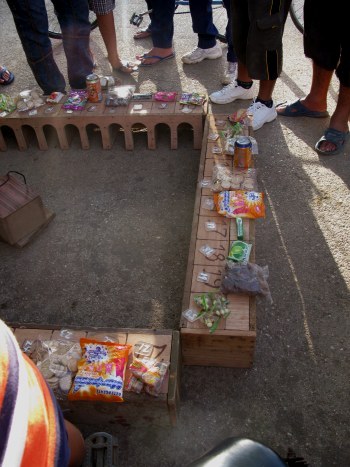
It seemed that the guinea pig family took the starring role in turns, for the rest of them were huddled in a rather ingenious cage. This was made out of two metal grill trays as floor and roof and the side walls being a few pieces of chicken wire, different bits of string and rags that had been woven into a sort of openwork crazy patio window full of holes.
A thin piece of wire was attached as a top handle to carry them home, where I hoped they lived in easier surroundings than in this mobile transporter.
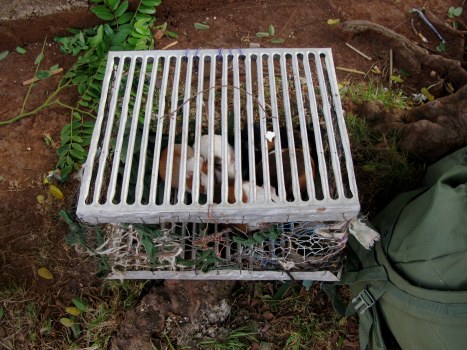
Meanwhile the performer of the moment rode on the shoulder of his owner, untethered. His little eyes followed me as I moved away. I thought of what I had read by Martin Buber:
An animal's eyes have the power to speak a great language
The most famous work of the Austrian-born Israeli philosopher Buber is his writing on the ‘I-Thou’ relationship as against that of ‘I-It’ relationship. He obviously didn’t see the animals as ‘it’.
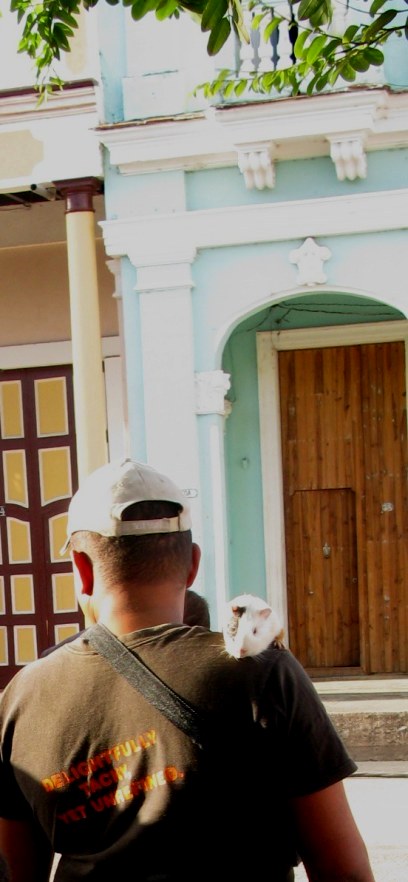
Strictly speaking according to English definitions of what constitutes being a pedlar, the guinea pig stakes and the dice board tempters are 'street traders' instead. They are not carrying their goods and moving around to conduct sales, stopping for a limited time and then moving on, but instead they have what may be described as ‘portable stalls’.
I am quite sure there is no such legislation on the Cuban Statutory books and the pedlars of the Parrandas were oblivious to any other definition than that of: fiesta = a mood of excitement punctuated by treats for children = a chance to sell goods and experiences.
On the colonnaded streets of the Plaza small markets were set up, selling all sorts of hand work: paintings, masks, leatherwork, hats, and bric-a-brac.
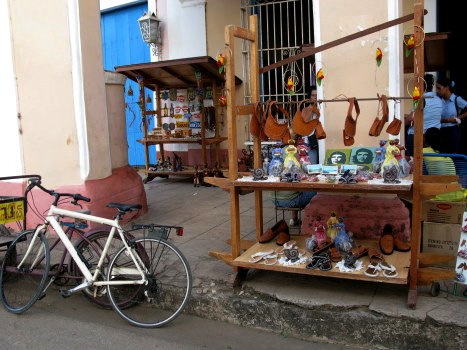
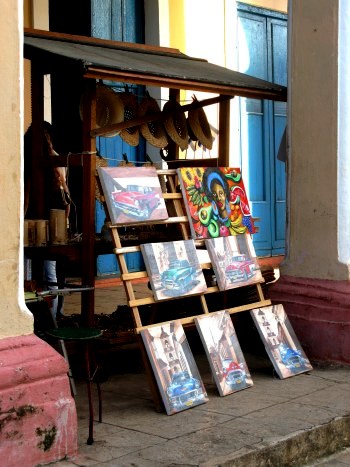
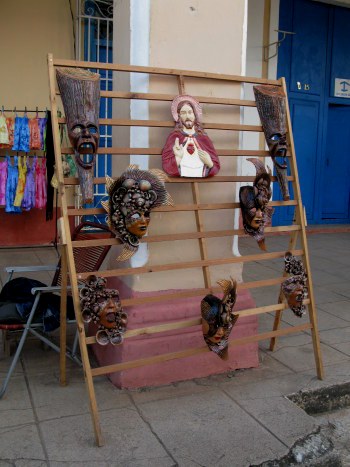
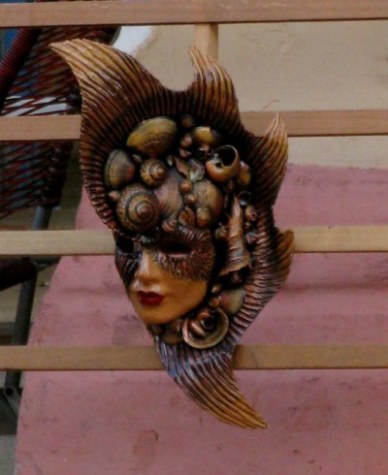
The pedlars of Remedios must have a great boost in their cash flow when the Parrandas are underway, as even in these early days before the big grand finale on Christmas Eve, trade was brisk.
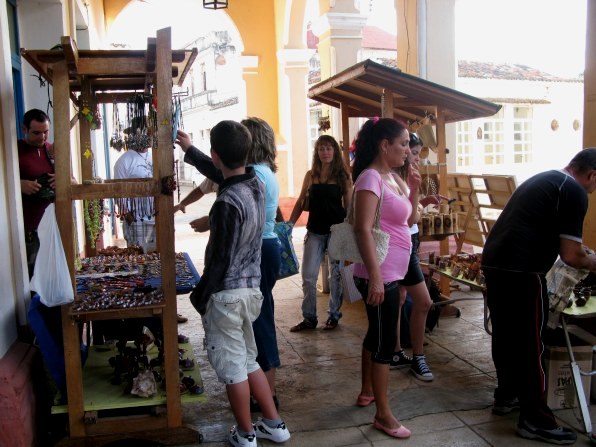
Further along was a more permanent stall. At one end you could buy a roll of barbed wire and a few ounces of nails, or some other hardware items.
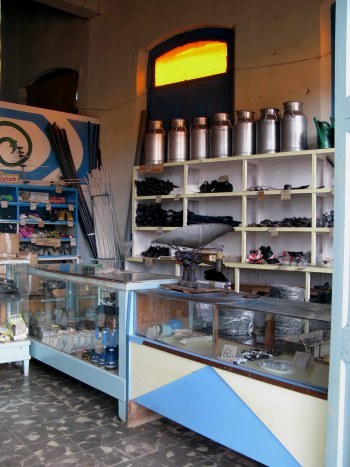
At the other there were more household items, buckets, and drinking glasses, water jugs, and mugs.
Having scanned the wares available for purchase, I was quite taken with the name above the stall, translated the way it looks: ‘Illusion’.
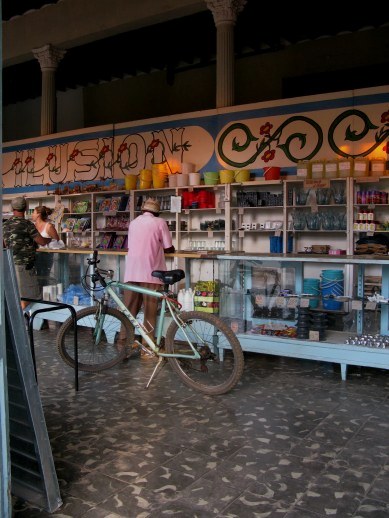
Further along there was a street market - possibly a regular event but one expecting better than usual attendance with the Parrandas crowds arriving.
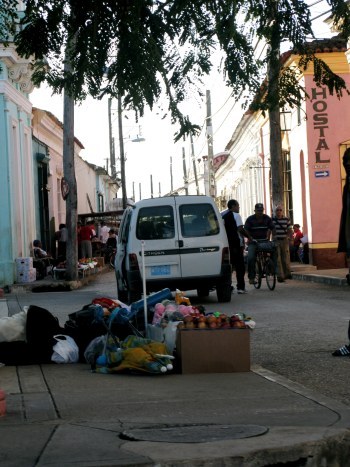
Browsers and shoppers alike get hungry - and every street market offers some sort of refreshment. It was no different in Remedios.
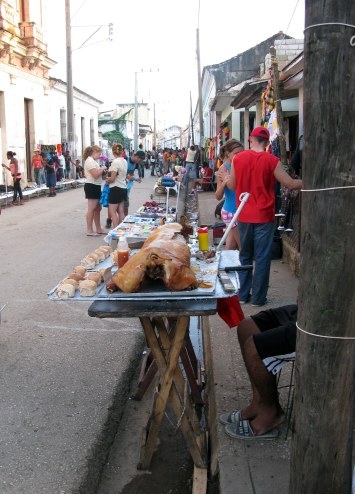
I had just rounded the corner and was getting quite hungry myself. We had just arrived back from a very long day of driving from Sancti Spíritus to the beautiful beach resorts on the Santa María – Las Brujas cays. These small islands lie along a spectacular emerald sea coast less than an hour away from Remedios.
Hungry or not, I was not about to avail myself of the pork burgers neatly laid out on the corner stall where this little piggy went to market.
At the same time as I had this thought, I contrasted it against the cups-a-soup I had witnessed in England offices being devoured while I shuddered.
The piggy burgers definitely looked more tempting.
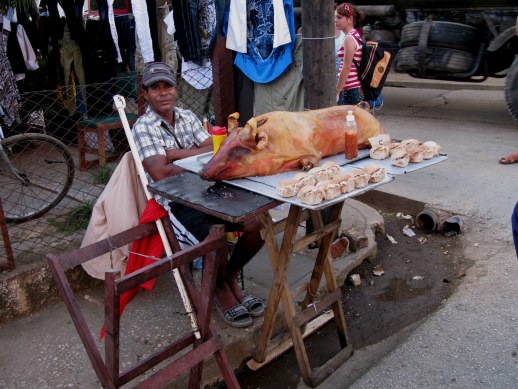
Many years earlier our Midwest barnyard and barn housed the neighbour’s pigs.
In those few years I became a real fan of their intellect, affection, cleanliness, and sense of fun. This appreciation developed against a background of prejudices about pigs with which I arrived from a predominantly city life beforehand.
After dealing with my pigs I came to agree with Mark Twain’s comment that:
Man was made at the end of the week when God was tired.
But the pig was made earlier
I had so often seen a resident pig in Cuban homes and hoped that this little piggy’s life had returned good food and good money to its owner.
I did feel sorry to see it so laid out. However, as the old proverb says:
One cannot have bacon and keep the pig too.
More Pages on Cuba here:
Havana pages
Agricultural
Fair
The
Art of Dominoes
Havana
Back Street Rambles
Capitol
Building
Havana
Classic Cars
Creative
transport in Havana
Malecón
- Fish and Philosophy
Havana
Angels
Havana
Grandeur
Political
Demonstration
Street
Water Skiing
Trinidad de Cuba pages
Palacio
Cantero Museum
Trinidad
de Cuba
Remedios
Other Cuban pages
Cienfuegos
Almendares
River Voodoo
Backroad
Travel
Bay
of Pigs
Viñales
- Pinar del Rio
